
December 10, 2025
A Patient's Guide to Nonsurgical Cosmetic Procedures
Explore popular nonsurgical cosmetic procedures like Botox and fillers. Learn how they work, the benefits, costs, and what to expect from an expert guide.
Oct 24, 2025
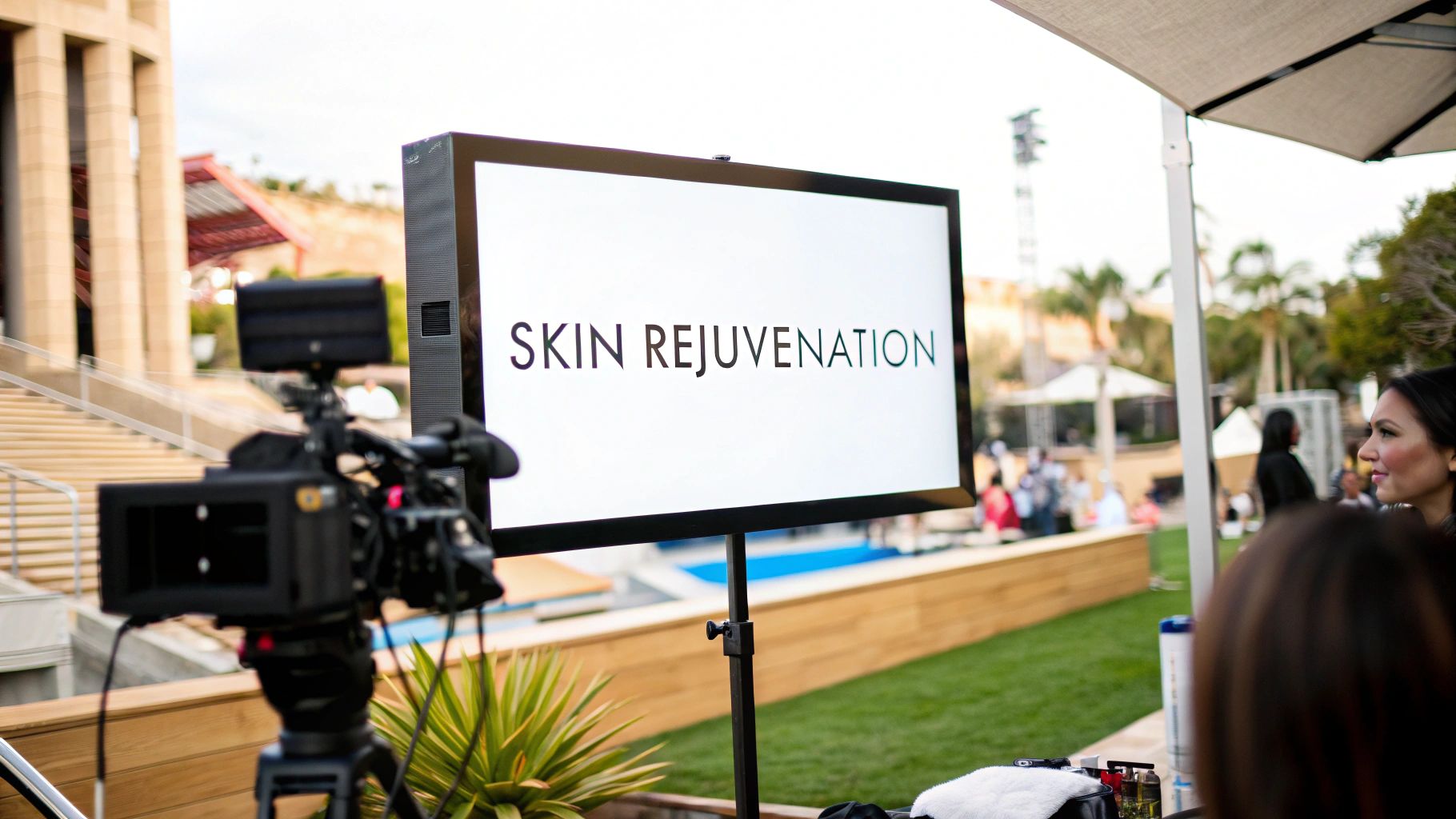
The quest for youthful, radiant skin has evolved far beyond simple creams and serums. Today's aesthetic medicine offers a powerful arsenal of treatments designed to reverse the signs of aging, correct imperfections, and restore a vibrant glow. Navigating these options can feel overwhelming, from high-tech lasers to sophisticated injectables. This guide is designed to cut through the confusion and provide a clear, detailed roadmap to the most effective procedures available today.
We will break down the 10 best skin rejuvenation treatments, detailing precisely how each one works, what to expect during recovery, and who makes an ideal candidate. Whether your goal is to smooth fine lines with microneedling, correct sun damage with laser resurfacing, or restore volume with dermal fillers, this list provides the essential information you need. Understanding the fundamentals of these leading modalities is the crucial first step toward building a successful treatment plan. To gain a broader perspective on your options, considering a comprehensive overview of anti-aging treatments can be highly beneficial.
This article offers more than just a simple list; it's a practical resource for making informed decisions. From Botox to Ultherapy and advanced combination therapies, we'll explore the science and artistry behind achieving your best possible skin.
Microneedling, also known as collagen induction therapy, is a minimally invasive procedure designed to trigger the body’s natural healing process. It utilizes a device equipped with fine, sterile needles to create controlled micro-injuries on the skin's surface. This process stimulates the production of new collagen and elastin, the key proteins responsible for skin's firmness, smoothness, and elasticity. As one of the best skin rejuvenation treatments, it effectively addresses a variety of concerns with minimal downtime.
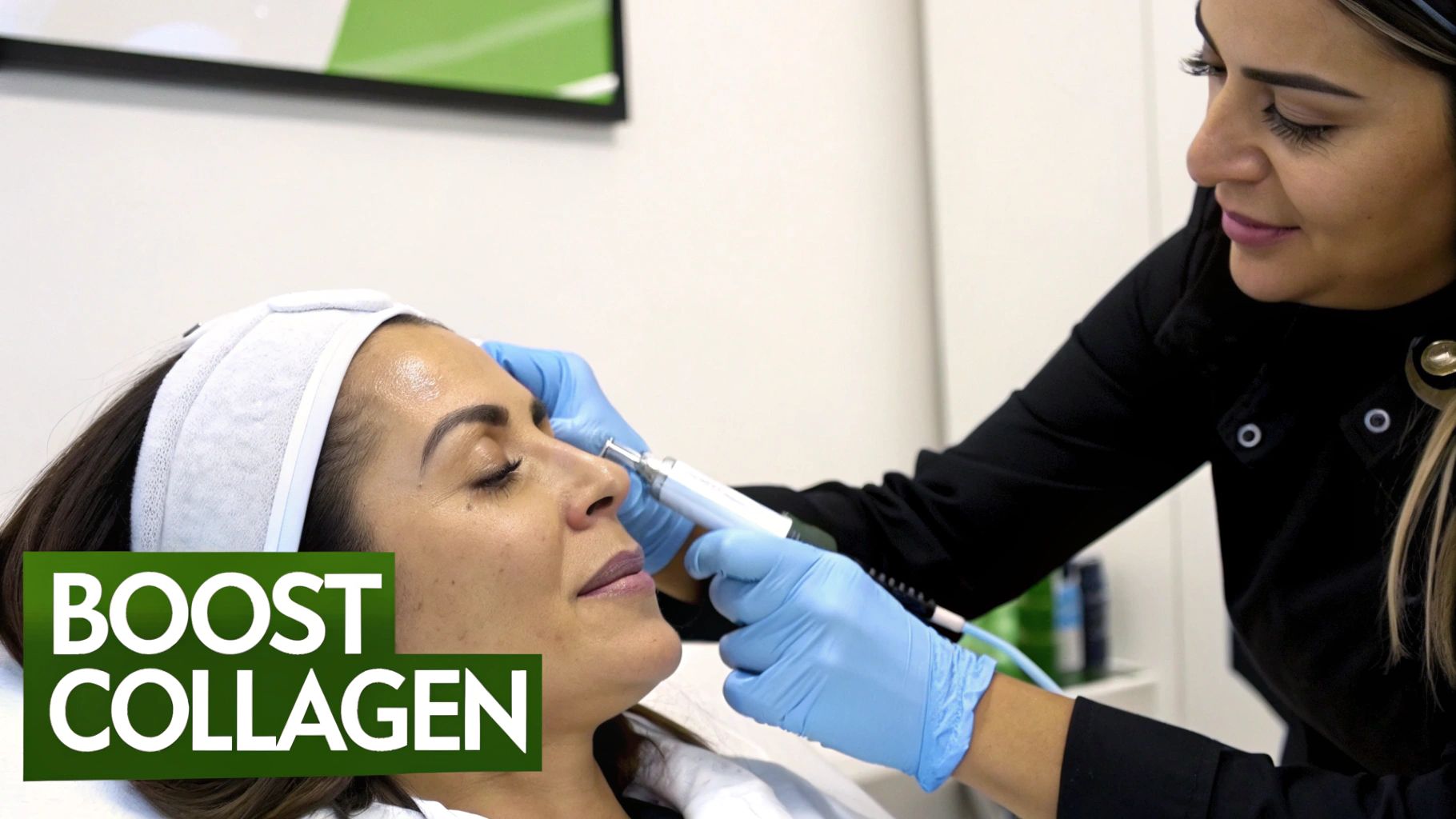
Microneedling is highly effective for individuals looking to improve skin texture, reduce the appearance of post-acne scars, minimize fine lines, and even out skin tone. Devices like the FDA-cleared SkinPen ensure a safe and standardized treatment. Unlike some laser therapies, it is generally safe for all skin types, including darker skin tones, as it carries a lower risk of pigmentation issues. For those weighing their options, understanding the differences between treatments is key; you can explore a detailed comparison to see if microneedling or a chemical peel is right for you on ccplasticsurgery.com.
To maximize your results and ensure a smooth recovery, follow these essential tips:
Laser resurfacing is a highly effective procedure that uses concentrated beams of light energy to improve skin tone, texture, and clarity. This technology is one of the best skin rejuvenation treatments available, offering two primary approaches: ablative and non-ablative. Ablative lasers, like the Fraxel Repair CO2 laser, work by vaporizing the outer layers of damaged skin for dramatic results, while non-ablative lasers, such as Clear + Brilliant, gently heat the underlying tissue to stimulate collagen production with minimal downtime.
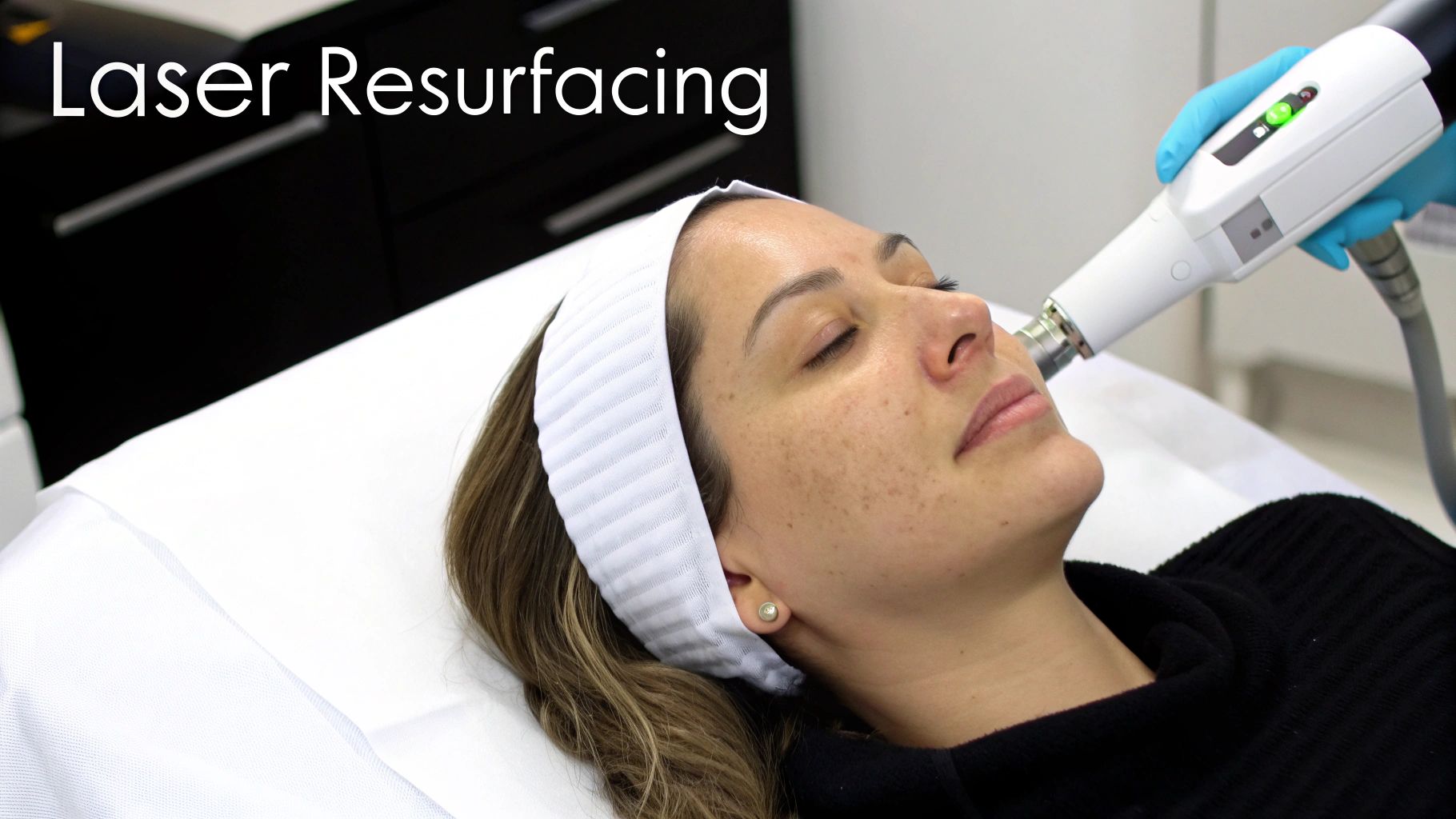
Ideal candidates for laser resurfacing are individuals concerned with moderate-to-severe wrinkles, significant sun damage, acne scars, or uneven skin texture. Ablative treatments are best for those seeking substantial improvement and who can accommodate a recovery period of one to two weeks. Non-ablative options are perfect for people new to laser treatments or those who prefer a gradual improvement with little to no interruption to their daily life. A consultation with a qualified provider is crucial to determine which laser is appropriate for your specific skin concerns and goals.
To achieve the best outcome and ensure proper healing after laser resurfacing, follow these key aftercare steps:
Chemical peels are a time-tested skin resurfacing technique that uses a chemical solution to remove the outer, damaged layers of skin. This controlled exfoliation triggers cellular turnover, encouraging the growth of new, healthier skin cells. As a result, the new skin is smoother, less wrinkled, and more even in tone. From superficial peels using mild acids like glycolic or salicylic acid to deeper peels with trichloroacetic acid (TCA), these treatments are among the best skin rejuvenation treatments due to their versatility and effectiveness.
Chemical peels are an excellent option for individuals dealing with a range of concerns, including sun damage, fine lines, acne, melasma, and uneven skin texture. The depth of the peel can be customized to the patient's specific needs and skin type. For instance, salicylic acid peels are highly effective for acne-prone skin, while TCA peels are better suited for correcting more significant pigmentation issues and signs of aging. A consultation with a professional is crucial to determine the most appropriate peel for your skin goals.
Proper aftercare is critical for healing and achieving the best possible outcome from your chemical peel.
Radiofrequency (RF) skin tightening is a non-surgical method for firming and contouring the skin. This advanced procedure utilizes controlled electrical energy to gently heat the deeper layers of the skin, including the dermis. This thermal effect triggers an immediate contraction of collagen fibers and stimulates the long-term production of new collagen and elastin. As one of the best skin rejuvenation treatments, it effectively tightens sagging skin and reduces wrinkles without damaging the outer skin surface.
RF skin tightening is an excellent option for individuals experiencing mild to moderate skin laxity on the face, neck, or body. It is particularly effective for those looking to address concerns like jowling, sagging brow lines, and loose skin under the chin. Popular treatments include Thermage, known for its deep, uniform heating, and RF microneedling systems like Infini, which combine two powerful modalities. Since RF energy is not dependent on skin pigment, it is a safe and effective choice for all skin types. Understanding the investment can help you decide, and you can explore more about the cost of Thermage treatment on ccplasticsurgery.com.
To achieve the best possible firming and lifting results, follow these key aftercare steps:
Dermal fillers are injectable gel-like substances used to restore lost volume, smooth lines, soften creases, and enhance facial contours. Unlike treatments that target the skin's surface, fillers work beneath it to plump up areas that have thinned due to aging. Options range from hyaluronic acid (HA) fillers like Juvederm and Restylane, which are reversible and popular for their natural feel, to biostimulatory fillers such as Sculptra (poly-L-lactic acid) and Radiesse (calcium hydroxylapatite), which encourage your body's own collagen production for longer-lasting results.
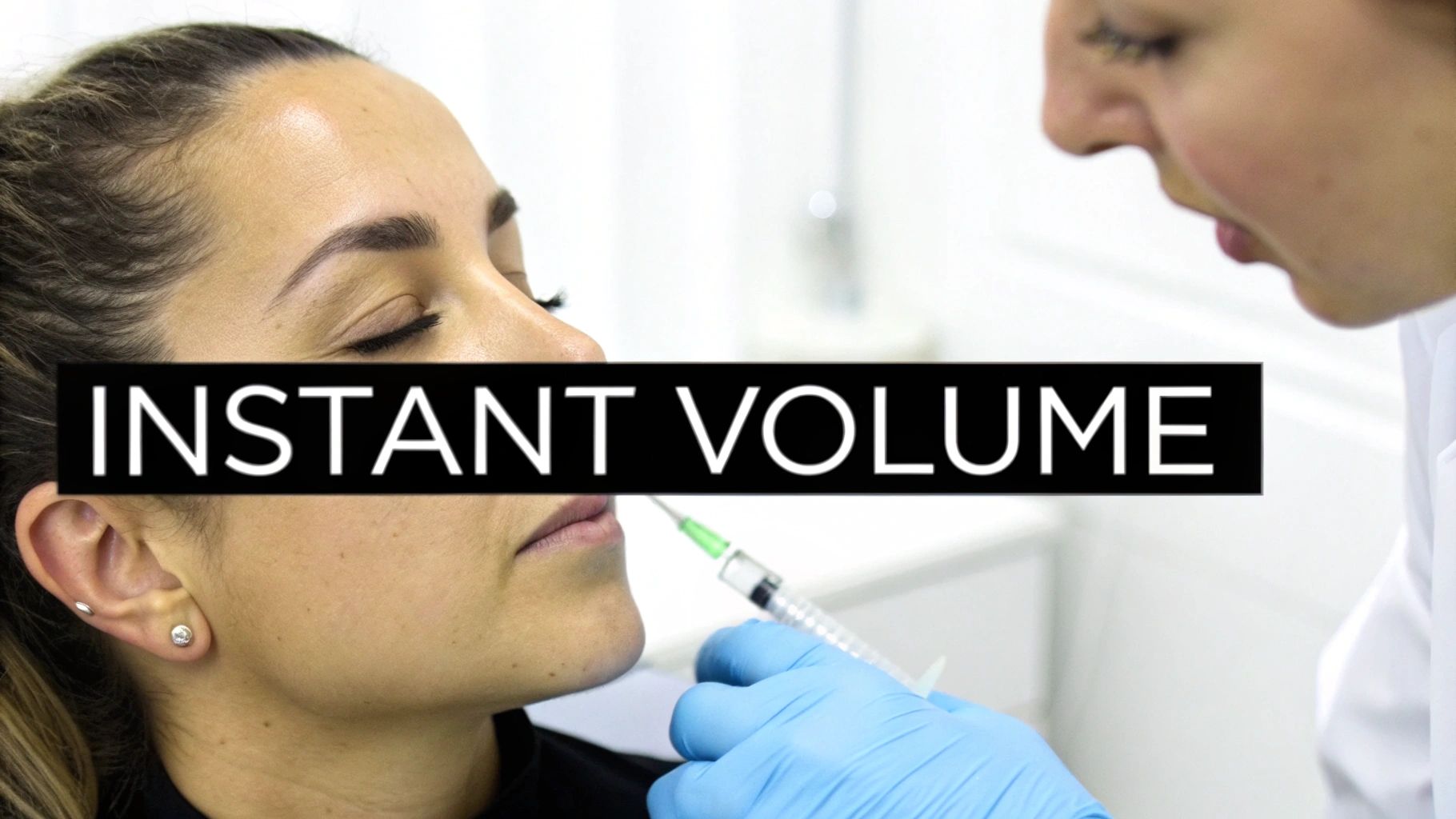
Dermal fillers are an excellent choice for individuals seeking to address static wrinkles (lines visible when the face is at rest), add volume to cheeks or lips, or diminish shadows under the eyes. This versatile treatment can be customized to achieve subtle enhancement or more significant structural support. It’s a powerful tool for facial rejuvenation, but it's important to be aware of the potential risks; you can read about the side effects of dermal fillers on ccplasticsurgery.com. Candidates should have realistic expectations and seek treatment from a board-certified, experienced injector.
To ensure beautiful results and a safe recovery, follow these essential post-injection guidelines:
Botulinum toxin injections, commercially known as Botox, Dysport, or Xeomin, are a leading choice for non-invasive facial rejuvenation. This treatment works by temporarily relaxing the specific facial muscles responsible for creating dynamic wrinkles, which are lines formed from repeated expressions like squinting or frowning. By inhibiting muscle contractions, Botox effectively smooths out existing forehead lines, frown lines between the eyebrows (glabellar lines), and crow's feet. As one of the best skin rejuvenation treatments, it offers a quick and highly effective way to achieve a more youthful, rested appearance.
Botox is an excellent option for adults who want to reduce the appearance of expression-based wrinkles and prevent them from becoming deeper. It is widely used by individuals in their 30s and beyond for both corrective and preventative anti-aging. The treatment is also frequently combined with dermal fillers for a more comprehensive facial refresh. Beyond aesthetics, it has medical applications for conditions like chronic migraines and excessive sweating. This treatment is suitable for most people seeking a proven, fast-acting solution for dynamic wrinkles with no downtime.
To ensure the best outcome and prolong the effects of your Botox treatment, proper aftercare is crucial:
Platelet-Rich Plasma (PRP) therapy harnesses your body's own healing capabilities to rejuvenate the skin from within. The process involves drawing a small amount of your blood, processing it in a centrifuge to isolate the platelet-rich plasma, and then re-injecting this concentrated serum of growth factors into the target area. This potent solution stimulates new collagen production, enhances cell turnover, and improves overall skin texture and tone. As one of the best skin rejuvenation treatments, it offers a natural approach to achieving a youthful glow.
PRP therapy is excellent for individuals seeking a natural method to improve skin texture, reduce fine lines, and address concerns like undereye hollows or acne scarring. It is especially popular when combined with other procedures, such as the famous "Vampire Facial," which pairs PRP with microneedling for enhanced product absorption and results. Because it uses the patient's own biological material, the risk of allergic reaction is virtually eliminated, making it a safe option for most people.
To get the most out of your PRP therapy and support the regenerative process, adhere to these guidelines:
Topical therapies represent a foundational approach to long-term skin rejuvenation, relying on consistent application of powerful, scientifically-backed ingredients. This category combines two potent pillars: prescription retinoids like tretinoin and medical-grade serums featuring growth factors or stem cells. Retinoids accelerate cellular turnover and stimulate new collagen, while growth factor serums provide bioactive proteins and peptides to support the skin’s natural repair mechanisms. Together, they offer a formidable at-home strategy for cumulative anti-aging benefits, making them one of the best skin rejuvenation treatments available.
This approach is perfect for individuals committed to a consistent, long-term skincare routine to address signs of aging like fine lines, wrinkles, uneven texture, and sun damage. Prescription retinoids, such as Tretinoin (Retin-A) and Tazarotene, are ideal for those seeking significant improvements in skin quality under medical supervision. Growth factor serums, from brands like SkinCeuticals or Dr. Barbara Sturm, are suited for anyone wanting to enhance skin repair and resilience, often used to complement professional procedures or as a standalone regenerative treatment.
To achieve the best results and maintain skin health while using powerful topicals, follow these essential guidelines:
Ultherapy is a non-invasive procedure that uses micro-focused ultrasound energy to lift and tighten the skin. It is the only FDA-cleared, non-invasive treatment for lifting skin on the neck, chin, and brow, and improving lines and wrinkles on the décolletage. The ultrasound energy generates a thermal effect under the skin, precisely heating deep tissue layers to stimulate the body's natural collagen production. This process results in a gradual, natural-looking lift and firming effect over two to three months, making it one of the best skin rejuvenation treatments for those seeking non-surgical alternatives.
Ultherapy is an excellent option for individuals with mild to moderate skin laxity, often described as the skin feeling less firm or "droopy." It is highly sought after for creating a more defined jawline, lifting the brows, and tightening sagging skin on the neck. Unlike procedures that affect the skin's surface, Ultherapy targets the deep foundational layers, including the SMAS layer addressed in surgical facelifts. This makes it a powerful choice for those who are not ready for surgery but desire noticeable, lasting results.
To achieve and maintain the best outcome from your Ultherapy treatment, follow these key recommendations:
A combination therapy approach involves a personalized, multi-modality treatment plan that synergistically combines different procedures to deliver comprehensive and superior results. Instead of relying on a single treatment, this strategy layers professional procedures, injectables, and targeted at-home skincare to address various concerns like collagen loss, volume depletion, and surface irregularities all at once. By strategically sequencing treatments like microneedling with PRP, fractional lasers, and dermal fillers, this approach provides one of the best skin rejuvenation treatments for achieving holistic and long-lasting outcomes.
This approach is ideal for individuals with multiple aesthetic goals who want to achieve significant, natural-looking facial rejuvenation. It is perfectly suited for those looking to address signs of aging on several fronts, such as fine lines, volume loss, uneven texture, and pigmentation simultaneously. Because the plan is entirely customized, it can be adapted for nearly any skin type or concern, from someone seeking comprehensive anti-aging to a patient wanting to correct severe acne scarring by combining subcision, laser resurfacing, and a targeted skincare protocol.
Since this involves multiple treatments, adherence to a structured care plan is crucial for success.
Navigating the landscape of modern aesthetic medicine can feel overwhelming. We've explored a comprehensive range of the best skin rejuvenation treatments available today, from the collagen-boosting power of Microneedling and Ultherapy to the precision of Laser Resurfacing and Botox. Each modality, whether it's the gentle resurfacing of a Chemical Peel, the foundational support of Dermal Fillers, or the regenerative potential of PRP Therapy, offers a unique pathway to revitalized skin.
The most critical takeaway is that these treatments are not isolated solutions but rather powerful tools in a customized toolkit. The true artistry of skin rejuvenation lies not in choosing a single "best" procedure, but in understanding how to strategically combine them. As we discussed, a multi-modality approach often yields the most dramatic and natural-looking results, addressing multiple layers of the skin and a variety of concerns simultaneously. For instance, combining the skin-tightening effects of Radiofrequency with the volume restoration of fillers can create a synergistic lift and contour that neither could achieve alone.
Embarking on this journey requires a clear, informed strategy. The ultimate success of any treatment plan hinges on a foundation of professional expertise and a deep understanding of your own skin. Here’s how to move forward with confidence:
Ultimately, investing in the best skin rejuvenation treatments is an investment in your confidence and well-being. By partnering with a trusted expert, you move beyond guesswork and into the realm of a strategic, medically-guided plan. This collaborative approach ensures that your journey is not only safe and effective but also perfectly aligned with your vision of beauty, delivering results that are both transformative and authentically you.
Ready to create your personalized rejuvenation plan? Schedule a consultation with Dr. Marc Fater at Cape Cod Plastic Surgery to explore which of these advanced treatments will deliver the beautiful, natural-looking results you desire. Begin your journey with an expert guide by visiting Cape Cod Plastic Surgery today.

December 10, 2025
Explore popular nonsurgical cosmetic procedures like Botox and fillers. Learn how they work, the benefits, costs, and what to expect from an expert guide.
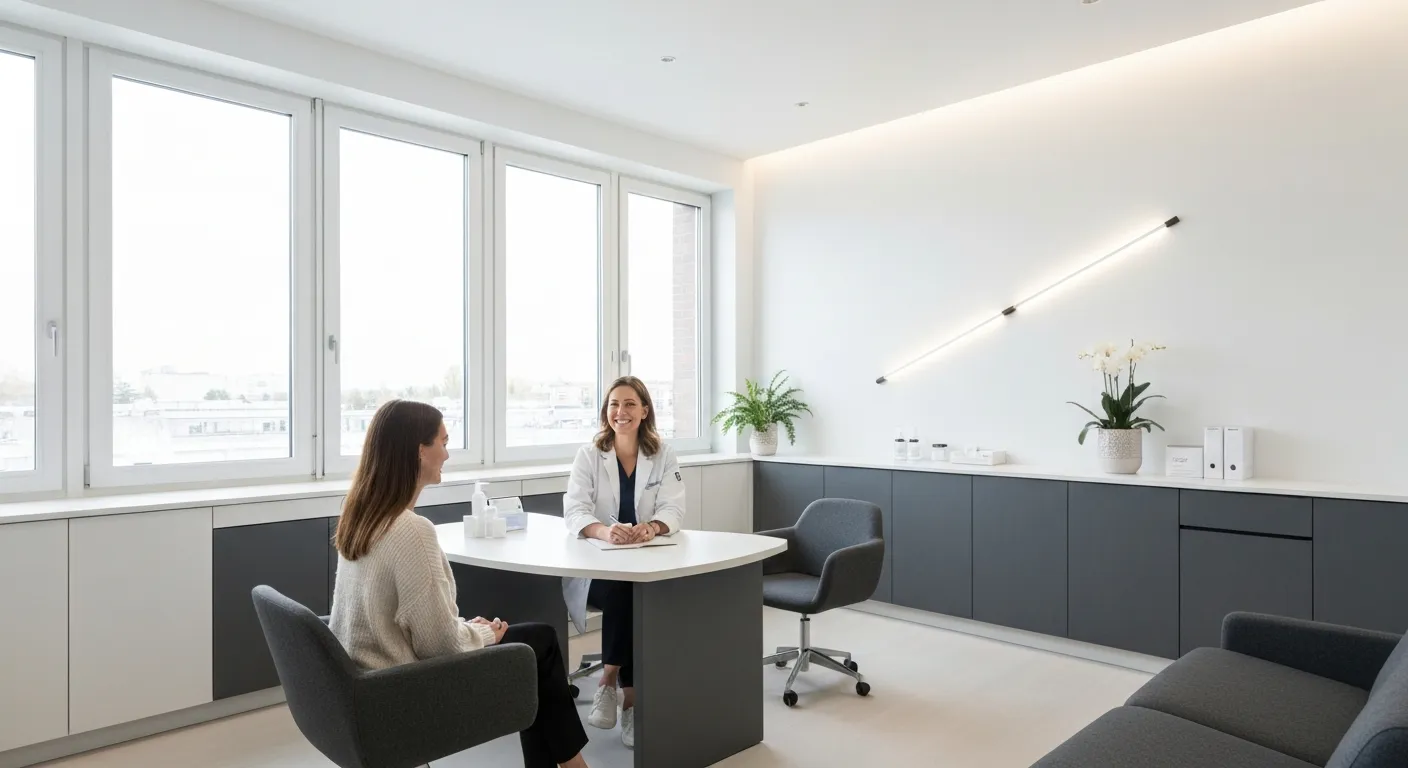
December 10, 2025
Exploring Your Breast Surgery Choices: From Cancer Treatment to Cosmetic Enhancements

December 9, 2025
Tired of looking tired? Uncover what causes under eye bags, from genetics to lifestyle, and explore expert-backed prevention tips and treatment options.